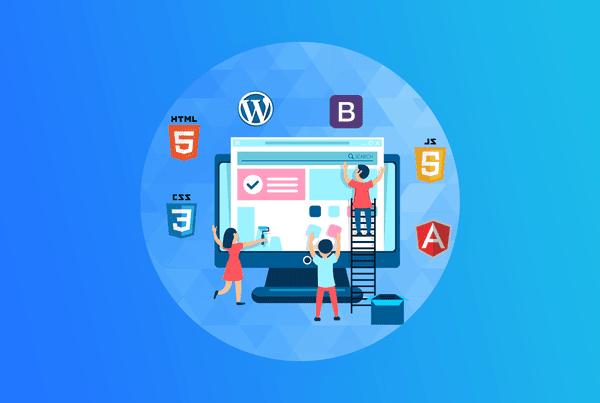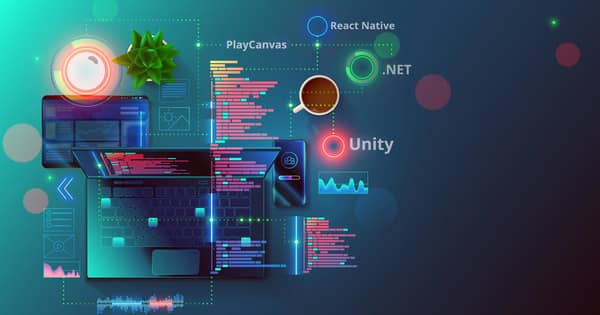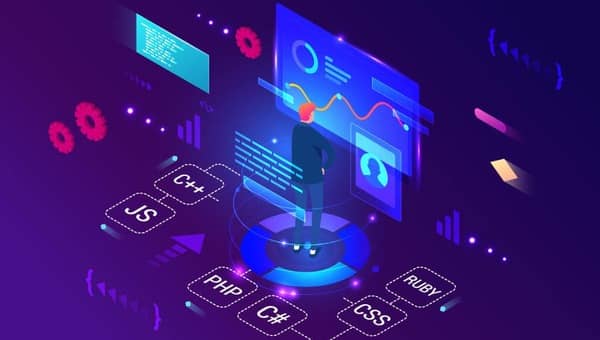
In the Era of AI: Why Data Centers Still Need Humans
September 10, 2024
What Is RISC-V?
September 18, 2024On this Page…
- What Are the Components of a Tech Stack?
- Five key components of a tech stack
- Why Choosing the Right Tech Stack Is Essential?
- What Are the Different Types of Tech Stacks?
- What Are the Benefits of a Tech Stack?
- Conclusion
Tech stacks are the building blocks of digital products. They form the structure of an application, with layers of different technologies. This combination of software tools and technologies is essential for building web and mobile applications. Tech stacks go beyond mere code; they create a resilient digital framework that supports your product and adapts to future growth. This article dives into the world of tech stacks, covering their components, different types, and the numerous benefits they bring.
What Are the Components of a Tech Stack?
The front end of a tech stack is what users see when they use an app or site. It’s designed with HTML, CSS, and JavaScript, defining how content appears to the user. The back end manages data and processes user requests. It includes databases, server-side programming languages like Python or Ruby, and APIs, facilitating communication with other software parts. The combination of developing the front-end and back-end is known as full-stack development.
Five key components of a tech stack
There are five main components of a tech stack. The first one is User Interface/User Experience (UI/UX). UI focuses on visual design, while UX focuses on the overall user experience. Both are essential in shaping user interaction and perception. Bootstrap and Tailwind are popular for UI design, offering flexibility for your project’s aesthetics.
The next part of a tech stack is the Web Server. In a software context, a web server receives requests from clients and responds with appropriate content. Apache and NGINX are popular web servers, offering more than just storage—they provide computing power for running databases and processing user input.

The third component is the Programming Language, which enables developers to communicate with the application. Examples include Ruby, Scala, PHP, and Java. The syntax varies across languages, and understanding it is critical to effective coding.
The Runtime Environment is next, which provides the necessary tools and resources to run the application, such as libraries and memory management. It allows programmers to execute the code and run the application in real-time, often featuring cross-platform functionality.
The fifth and final component is the Database, an organized data collection, typically containing records stored in tables. Popular databases include MongoDB and MySQL. With APIs, businesses can integrate BI tools to extract vital information from database records.
The evolving tech stack has become more flexible due to SaaS tools, allowing companies to select technologies and frameworks that best suit their needs.

Why Choosing the Right Tech Stack Is Essential?
Selecting the right tech stack is important. Because a tech stack is a combination of software and technologies—it can significantly impact your business, potentially influencing products, operational efficiency, and the talent you attract. Choosing a tech stack that balances efficiency, customization, user-targeting, scalability, and maintenance is vital.
Aim for a scalable solution that allows server addition as needed, preventing upfront costs based on estimated usage. For non-core business apps, opt for low-switching-cost options or growth-friendly plans. An eCommerce start-up might begin with an affordable Shopify plan, later upgrading or shifting to a custom site.
Product analytic tools can also be beneficial. These tools provide essential insights into product performance, feature usage, and user pain points, guiding your product roadmap and future tech stack decisions. Irrelevant analytics tools can disrupt product development, potentially leading to wasted efforts.

What Are the Different Types of Tech Stacks?
Choosing from all of the various types of tech stacks can be intimidating. However, there are popular options like MEAN, LAMP, and MERN that are favored by tech giants and start-ups. These stacks, consisting of various technologies, have a good reputation and are widely used. When selecting a tech stack, it’s important to consider your team’s expertise and specific software development needs.
The LAMP Stack, which stands for Linux, Apache, MySQL, and PHP, is a widely adopted stack recognized for its simplicity. It’s especially useful when developing web applications, websites, and content management systems.
Then there’s the MEAN Stack, consisting of MongoDB, Express, AngularJS, and Node.js. The MEAN stack relies on JavaScript and is ideal for creating web applications that demand quick data processing.
The MERN Stack is similar to MEAN but swaps AngularJS with React to build the front-end interface. Developers often choose MERN when constructing single-page applications.
The .NET Stack, a Microsoft-born tech stack, includes Windows, IIS, SQL Server, and the .NET Framework. This stack is frequently employed when building secure, scalable web, desktop, and mobile applications within the Microsoft ecosystem.
There’s the Ruby on Rails Stack for those partial to the Ruby programming language. Known for its ease of use, it comes packed with tools for building web applications, making it a popular choice among startups and small businesses.
The Python Stack is favored for its simplicity and readability. Widely used in web development, data analysis, and AI, it’s a great choice for complex, data-driven applications.
Lastly, there is also a Serverless Tech Stack, which enables app development without server management, hosted on the cloud. Ideal for small firms, it scales automatically, supports multiple languages, and charges only for active use.
There are many other tech stacks, each with its strengths and weaknesses. The choice of tech stack should depend on your software application’s specific needs and your development team’s skills.

What Are the Benefits of a Tech Stack?
A well-chosen tech stack can potentially transform business operations. It can streamline processes and enhance efficiency. It can also attract skilled talent, support scalability, and foster innovation for long-term growth and a competitive edge.
There are several benefits a tech stack can offer. The first benefit is it offers flexibility, making it easier to modify the project as it evolves. Using multiple stacks for different components of an application can speed up the development cycle and improve adaptability.
Tech stacks enhance efficiency. Leveraging preexisting code, libraries, and frameworks expedites development and simplifies code maintenance and scaling.
The right tech stack can also increase reliability. Other developers have successfully used tech stack technologies, reducing the likelihood of unexpected crashes or breakdowns.
It can also increase its scalability. The appropriate tech stacks enable easy accommodating of more users, traffic, or storage as needed. Multiple frameworks and languages can enhance your application’s scalability, allowing it to adapt as demands change over time.
Tech stacks can also improve speed and performance. Frameworks like Ruby on Rails can help create projects that operate swiftly and efficiently. Tools like Node.js and NoSQL databases can enhance the performance of applications that handle a large number of requests or require rapid data storage and retrieval.
Lastly, tech stacks often come with support from an active community, which can ensure access to help and resources when needed.
Conclusion
Tech stacks serve as the foundation for digital products. It forms the structure of applications using different technology layers. Beyond code, they create a resilient framework supporting products and adapting to growth. The right tech stack can improve efficiency, reliability, scalability, speed, and performance. It can potentially attract talent, helps a company’s business goals, and provides support through active communities. Choosing a tech stack is crucial for streamlining processes, enhancing efficiency, and fostering long-term growth and innovation.

